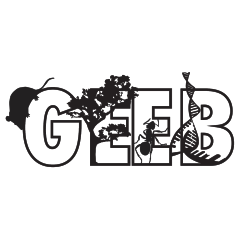Angel is a third year PhD student at the Department of Animal Biology in the Catchen Lab. He works on population and comparative genomics of Antarctic Icefishes.
What have you been up to this past week?
I am starting this semester as GEEB’s webmaster, so I’ve been working on updating the website. The first thing we wanted to change was to add a feed for the official GEEB Twitter account. In addition, I have been working alongside the other GEEB officers on a new initiative that we are calling A Week in the Life. It is a way to get to know fellow GEEB members outside their main project. Things like the department, the lab, and the project can always be found at their department’s website, but what about what they do on an average day (or week)? What do they do in their free time? What are their hobbies, favorite coffee spots on campus, preferred podcast to listen to while writing? This is sometimes a bit harder to determine, and it’s the kind of information that could be useful to new and prospective graduate students.
Using me as an example, as you can read above, I work on genome evolution of Antarctic Icefishes. We utilize genome sequencing and assembly, synteny, and metrics of population diversity and divergence to see how the genomes of these fishes have changed in an extreme environment. This is cool and all, but what do I actually do? Do I spend my time in the field fishing? Do I work on the bench all the time? Well, as you might imagine, this varies from week to week. As a lab, we have been working on developing and testing a software for the analysis of RADseq data, so most of my work recently has been running the software many times to obtain benchmarking information. Other weeks things might break, so I spend some time finding and fixing errors. Sometimes the results are nice, so I can show some fancy plots in that week’s lab meeting. This week, however, I’ve mostly been working on GEEB stuff getting things ready for the new semester.
Enough about me, we are interested in finding out about your week. Did that particularly problematic experiment finally work out? Did you find a super helpful R package? Tell us about it. Even if things didn’t work out as planned, tell us too. You never know if someone reading might be able to help. And beyond working, tell us if you saw a cool movie at the Art Theater, or if your team won a Volleyball match. That information is also helpful so others know about the activities available in our community. Also, do you have any cool pictures you want to share? It doesn’t have to be that fancy. A picture of your field site or bench will work. Heck, a screenshot of your word document will be enough. We just want to see what you’ve been up to.
What have you been listening to recently?
I almost always listen to music while working. It helps me focus on the task at hand. If I need to be particularly concentrated, I prefer listening to instrumental music. I really like Spotify’s Synthwave from Space . Kamasi Washington has been on frequent rotation too. This week I actually found out about this cool band called Tauk, so I’ve been listening to their album Sir Nebula a bunch. It is this weird Prog Fusion instrumental band with really cool synth sounds. This document was partially written while listening to that.
What’s a fun thing you did this week?
Last weekend, I went to the Virginia Theater in Downtown Champaign and saw the 50th anniversary screening of Stanley Kubrick’s 2001: A Space Odyssey. They recently did a big remaster of the movie and were doing special 70mm screenings. I had seen the movie before a few times, but never in a theater and particularly not in 70mm film. They did it with the musical overture and even an intermission. It was definitely worth it seeing in that format.
How does the average week look like?
This is how my monitor looks on an average day: one (or more) terminal windows and a text editor. I was working on a Python script to generate a simulated distribution of amplified PCR duplicates and error (left). On the terminal window (right) you can see part of the resulting distribution. These distributions will then be used to test the accuracy when detecting PCR clones in real sequencing data.


